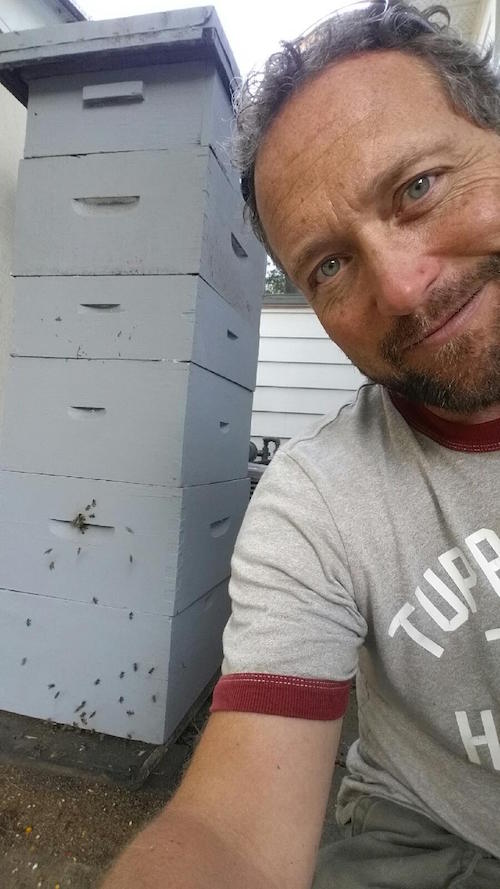The honey bee is becoming more sought after by urban residents. Hundreds of people in Alberta are hobby beekeepers. It can be a relatively inexpensive hobby that provides a sweet outcome at the end of the year.
For how small honey bees actually are, they can accomplish a lot. There’s much to learn about this small, but very impactful insect.
If you’re thinking of becoming an urban beekeeper, you have to get past the fear of bees.
Alair Homes Edmonton partner, Jason Brown is a proud urban beekeeper.
“The word is out that beekeeping is a safe and cool hobby and the municipalities have made the information and permits accessible. People are looking at different ways to save the planet and helping bees thrive can assist in achieving that,” says Brown.
How to get started
- Before you do anything else, contact your local municipality and make sure it’s legal for you to keep bees.
- Do your research. Beekeeping for Dummies is a very informative book.
- Sign up for some beekeeping courses. They are helpful and may be required to obtain your permit.
- Contact your local bee co-op and see if there’s an opportunity to purchase bees.
- Look to local buying and selling websites like Kijiji to see if there’s beekeeping equipment for sale. Tools can also be purchased at the bee co-op in Spruce Grove.
Beekeeping essentials
To start building your hive, you need a super level or honey box. You will need to stack frames that usually are 16 inches deep to create a super level. About 10 frames will do the trick.
For protection, you should have gloves, netted veil and clothing like overalls to help cover up any exposed skin.
Essential tools include a smoker and a hive tool to extract the frames.
If you order your bees in January from the bee co-op, they will arrive in the spring. Bees will come in from Italy, Hawaii, and New Zealand. You can also seek out local farmers that are willing to sell some of their bees or whole hives. The bee co-op can help you learn more about how to winterize your hive for the cold Alberta months.
In an urban setting your hive should be placed somewhere out of the way so it is not disturbed. For example, the top of a flat roof garage, in a vegetable garden, or behind a shed.
 According to the Canadian Honey Council, honey is one of the safest foods. Most harmful bacteria cannot live in honey for any length of time.
According to the Canadian Honey Council, honey is one of the safest foods. Most harmful bacteria cannot live in honey for any length of time.
A normal colony of honey bees contains only one queen who may lay 2,000 eggs per day during her busy season. There are thousands of worker bees, undeveloped females, who do all the work. There’s also be several hundred male bees called drones. Their purpose is to fertilize the queen.
Benefits of beekeeping
Beekeeping can improve pollination. If you have a vegetable garden, due to the early pollination of the small crops, you are more likely to have larger vegetables.
It also helps connect our food system. You are doing the planet a service.
Then there’s the reward. You can collect about 50 pounds of honey or more from one hive. There’s also the opportunity to collect pollen for consumption with a pollen trap. This can help with allergies.
At Alair Homes Edmonton, we’ve developed a business model that sets us apart from other home builders, offering transparency in general contracting and home building services. Our resident beekeeper, Jason Brown, can offer you his advice on hive placement and other buzz-worthy inquiries in the world of beekeeping.